
Mystical Isle of Mull: Scotland's Hidden Gem
Discover the Isle of Mull: A Scottish island paradise with breathtaking landscapes, rich wildlife, and a vibrant cultural heritage. Perfect for nature lovers and history buffs.
The Isle of Mull, located off the west coast of Scotland, is a haven for nature lovers and history enthusiasts alike. Known for its dramatic landscapes, ancient castles, and charming villages, Mull offers a serene escape from the hustle and bustle of modern life. With its rugged coastline, pristine beaches, and rolling hills, the island is a paradise for hikers and wildlife watchers. From the colorful town of Tobermory to the historic Duart Castle, there is no shortage of things to see and do on this enchanting island. One of the main attractions of the Isle of Mull is its abundant wildlife. The island is home to a variety of species, including golden eagles, otters, and red deer. Whale and dolphin watching tours are popular activities, providing a unique opportunity to observe these magnificent creatures in their natural habitat. The island's diverse ecosystems, from moorlands to coastal waters, make it a fascinating destination for nature enthusiasts. The Isle of Mull also boasts a rich cultural heritage. Visitors can explore ancient ruins, such as the Iron Age fort at Dun Ara, or visit the island's many historic churches and monuments. The island's main town, Tobermory, is famous for its brightly painted buildings and bustling harbor. Here, visitors can sample local seafood, browse artisan shops, and learn about the island's history at the Mull Museum. Whether you're interested in outdoor adventures or cultural experiences, the Isle of Mull has something to offer everyone.
Local tips in Isle of Mull
- Visit Tobermory's colorful harbor early in the morning to avoid crowds and capture the best photos.
- Book wildlife tours in advance, especially during peak seasons, to secure a spot.
- Bring waterproof clothing and sturdy footwear; weather can be unpredictable and trails can be muddy.
- Try local delicacies such as fresh seafood and Mull cheddar at local eateries.
- Check ferry schedules ahead of time as crossings can be affected by weather conditions.
Mystical Isle of Mull: Scotland's Hidden Gem
The Isle of Mull, located off the west coast of Scotland, is a haven for nature lovers and history enthusiasts alike. Known for its dramatic landscapes, ancient castles, and charming villages, Mull offers a serene escape from the hustle and bustle of modern life. With its rugged coastline, pristine beaches, and rolling hills, the island is a paradise for hikers and wildlife watchers. From the colorful town of Tobermory to the historic Duart Castle, there is no shortage of things to see and do on this enchanting island. One of the main attractions of the Isle of Mull is its abundant wildlife. The island is home to a variety of species, including golden eagles, otters, and red deer. Whale and dolphin watching tours are popular activities, providing a unique opportunity to observe these magnificent creatures in their natural habitat. The island's diverse ecosystems, from moorlands to coastal waters, make it a fascinating destination for nature enthusiasts. The Isle of Mull also boasts a rich cultural heritage. Visitors can explore ancient ruins, such as the Iron Age fort at Dun Ara, or visit the island's many historic churches and monuments. The island's main town, Tobermory, is famous for its brightly painted buildings and bustling harbor. Here, visitors can sample local seafood, browse artisan shops, and learn about the island's history at the Mull Museum. Whether you're interested in outdoor adventures or cultural experiences, the Isle of Mull has something to offer everyone.
When is the best time to go to Isle of Mull?
Iconic landmarks you can’t miss
Tobermory Lighthouse
Discover the enchanting Tobermory Lighthouse on the Isle of Mull—a historical gem offering stunning coastal views and a glimpse into maritime history.

Lochbuie Standing Stones
Explore the ancient Lochbuie Standing Stones on the Isle of Mull, a captivating historical landmark that connects visitors to Scotland's rich heritage.

Tobermory Clock Tower
Explore the enchanting Tobermory Clock Tower, a historical landmark showcasing the rich maritime heritage of the Isle of Mull.

Memorial to Robert John Brown
Explore the historic Memorial to Robert John Brown in Tobermory, Isle of Mull, and enjoy stunning coastal views and rich local heritage.

Fossil Tree
Discover the ancient wonders of the Fossil Tree on Isle of Mull, a stunning historical landmark revealing Earth's prehistoric past amidst breathtaking landscapes.

Lochbuie Mausoleum : Isle Of Mull
Experience the tranquility and historical significance of Lochbuie Mausoleum on the Isle of Mull, a serene shrine surrounded by breathtaking Scottish landscapes.

Stone Head
Explore the breathtaking Stone Head on Isle of Mull, a natural wonder offering stunning views and unforgettable experiences in the Scottish Highlands.

Unmissable attractions to see
Duart Castle
Discover the rich history and breathtaking views at Duart Castle, a stunning historical landmark on the Isle of Mull, Scotland.

Fingal's Cave
Discover Fingal's Cave, a breathtaking natural wonder on the Isle of Staffa, renowned for its stunning basalt columns and captivating acoustics.

Iona Abbey and Nunnery
Experience the enchanting charm of Iona Abbey and Nunnery, a historic sanctuary on the serene Isle of Iona, steeped in spirituality and natural beauty.

Calgary Beach
Explore Calgary Beach on the Isle of Mull: a tranquil paradise of golden sand, stunning views, and abundant wildlife.

Eas Fors Waterfall
Discover the breathtaking Eas Fors Waterfall on the Isle of Mull, a stunning natural attraction surrounded by rugged landscapes and serene beauty.

Calgary Art In Nature
Experience the perfect blend of art and nature at Calgary Art in Nature on the Isle of Mull, a breathtaking destination for outdoor enthusiasts and art lovers.

Tobermory Distillery Visitor Centre
Explore the rich heritage of whisky production at Tobermory Distillery, a captivating visitor centre on the stunning Isle of Mull.

The View Oban
Discover the perfect blend of stunning views and delectable Scottish cuisine at The View Oban, a must-visit restaurant in Oban, Scotland.

Glengorm Castle
Experience the magic of Glengorm Castle on the Isle of Mull, where history, luxury, and nature unite for an unforgettable getaway.

Aros Park
Experience the breathtaking beauty of Aros Park on the Isle of Mull, a perfect blend of tranquility and outdoor adventure.

Tobermory Lighthouse
Discover the stunning Tobermory Lighthouse on the Isle of Mull, a historic beacon offering breathtaking views and rich maritime heritage.

The Mull Museum
Explore the fascinating history of the Isle of Mull at The Mull Museum, a treasure trove of local culture and heritage in Tobermory.

St. Columba’s Cathedral
Discover St. Columba's Cathedral in Oban, a stunning blend of architecture, history, and spirituality amidst breathtaking coastal views.

Lunga, Treshnish Isles
Explore the breathtaking landscapes and rich wildlife of Lunga in the Treshnish Isles, a hidden gem on the Isle of Mull, perfect for nature lovers.
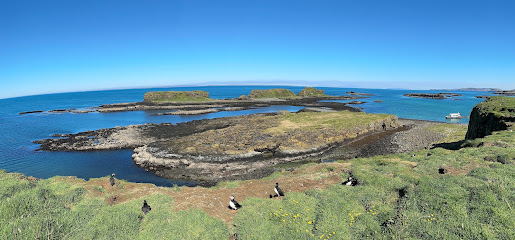
Salens ships
Explore the historic Salens Ships at the Sound of Mull, a picturesque maritime attraction offering breathtaking views and rich history on the Isle of Mull.
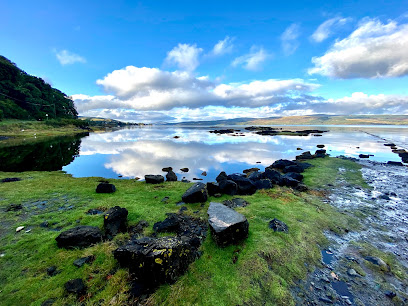
Essential places to dine
Macgochans
Experience the best seafood dining at Macgochans in Tobermory - where flavor meets stunning harbor views.

Cafe Fish, Upper Floor, The Pier, Tobermory
Experience exquisite seafood dining at Cafe Fish in Tobermory - where fresh flavors meet stunning coastal views.
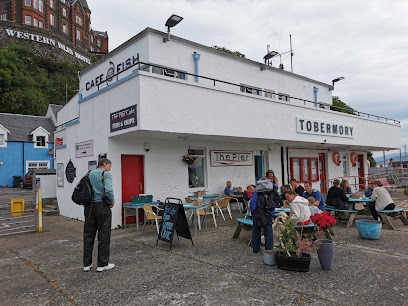
Am Birlinn
Discover culinary excellence at Am Birlinn, where fresh seafood meets stunning views on the Isle of Mull.
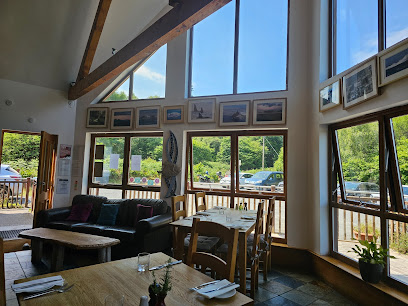
The Creel Seafood Bar
Discover fresh seafood delights at The Creel Seafood Bar on Isle of Mull—where local flavors meet breathtaking coastal views.

Spice of Mull
Discover the flavors of India and beyond at Spice of Mull in Tobermory—where every meal is a celebration.

An Cala Ciuin
Discover An Cala Ciuin in Tobermory: A delightful restaurant offering seasonal Scottish cuisine with stunning views of the Isle of Mull's coastline.
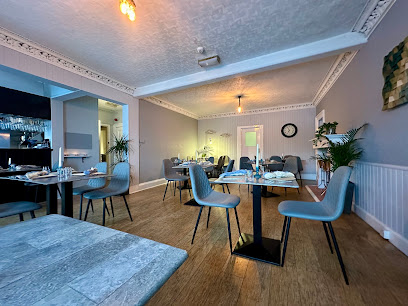
Markets, malls and hidden boutiques
Isle of Mull Cheese and Spirit
Experience the artisan flavors of Isle of Mull Cheese and Spirit - a delightful dairy farm and coffee shop nestled in breathtaking Scottish landscapes.

Isle Of Mull Soap Co Ltd
Explore the Isle of Mull Soap Co in Tobermory for handcrafted soaps and gifts that showcase the beauty of Scotland's natural ingredients.

Tobermory Chocolate
Discover Tobermory Chocolate, a delightful sweet shop on the Isle of Mull, offering handmade chocolates and a cozy atmosphere for every sweet tooth.

Tobermory Stores
Explore the unique offerings at Tobermory Stores, where local craftsmanship meets charming Scottish heritage on the Isle of Mull.

Co-op Food - Tobermory
Explore the Co-op Food in Tobermory for local produce and essentials, perfectly located in the heart of the Isle of Mull.

Craignure SPAR and Post Office
Discover the convenience of Craignure SPAR and Post Office, your one-stop shop for essentials and local delights on the Isle of Mull.

The Ferry Shop
Discover The Ferry Shop on the Isle of Mull: your ideal stop for local goods, essentials, and a taste of island life.

Fingal's Cave Gift Shop
Discover the charm of Fingal's Cave Gift Shop on the Isle of Mull, where unique local crafts and souvenirs await every traveler.

Island Crafts
Explore the creativity of Scotland at Island Crafts, a premier craft shop and art gallery in Tobermory featuring local handmade treasures.

Island Blue Gallery
Explore art, crafts, and coffee at Island Blue Gallery, a charming gift shop and café in the heart of Tobermory, Isle of Mull.
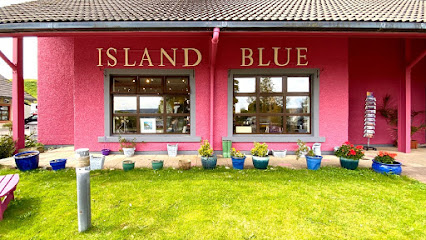
Island Blue Tobermory
Explore Island Blue Tobermory, a charming gift shop filled with unique local crafts and souvenirs on the beautiful Isle of Mull.

An Camus
Explore An Camus, a charming gift shop on the Isle of Mull, offering unique handcrafted items and exquisite Scottish artistry.

Spar Bunessan
Discover Spar Bunessan, a delightful convenience store offering essential supplies and local treats in the heart of Bunessan on the Isle of Mull.

Island Castaways
Uncover hidden gems and support local charities at Island Castaways, a charming charity shop on the Isle of Mull.

Seafare
Experience authentic Scottish shopping at Seafare in Tobermory, where local crafts and delicious foods come together in a charming atmosphere.

Essential bars & hidden hideouts
Macgochans
Experience the best of Tobermory at Macgochans, where fresh seafood meets a cozy pub atmosphere in the heart of the Isle of Mull.
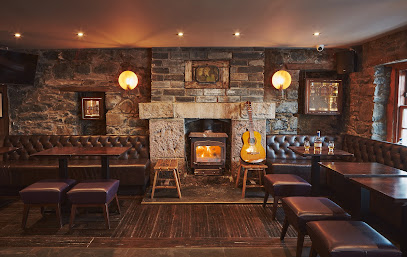
Mishnish
Discover the heart of Tobermory at Mishnish, where delightful cuisine and fine wines create an unforgettable experience.
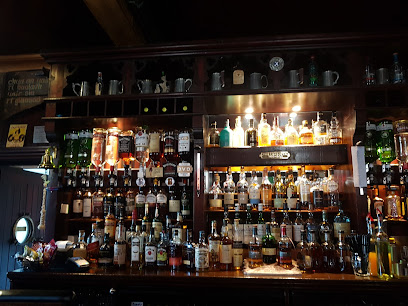
Isle of Mull Hotel & Spa
Experience the beauty of the Isle of Mull at this luxurious hotel & spa, where relaxation meets adventure in a stunning Scottish setting.

Craignure Inn
Experience the warmth and charm of Craignure Inn on the Isle of Mull, where local flavors and breathtaking views await.
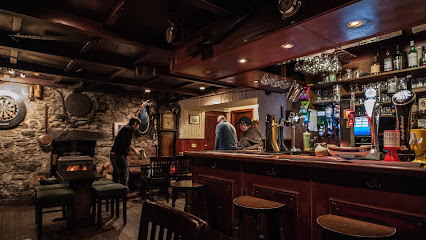
Cafe Fish, Upper Floor, The Pier, Tobermory
Discover the exquisite flavors of the sea at Cafe Fish in Tobermory, where fresh seafood meets breathtaking views.

Western Isles Hotel
Discover the breathtaking views and warm hospitality at Western Isles Hotel in Tobermory, Isle of Mull, your perfect getaway.
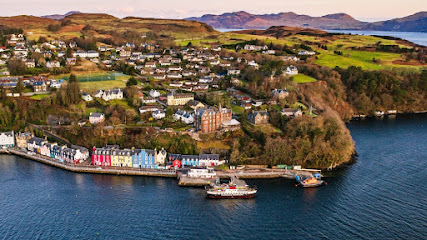
The Tobermory Hotel
Experience the vibrant atmosphere and local flavors at The Tobermory Hotel, your perfect seaside retreat in the Isle of Mull.

Bellachroy Hotel
Discover the heart of the Isle of Mull at Bellachroy Hotel, where local traditions meet comfortable hospitality.

Am Birlinn
Discover the flavors of the sea at Am Birlinn, a seafood restaurant in Dervaig, Isle of Mull, where fresh local ingredients meet breathtaking views.

The Keel Row
Experience the heart of Fionnphort at The Keel Row, where local flavors and warm hospitality come together in a charming pub setting.

The Galleon Bistro Tobermory
Discover the charming Galleon Bistro in Tobermory, where fresh local ingredients meet stunning waterfront views for an unforgettable dining experience.

The Creel Seafood Bar
Experience the freshest seafood in a breathtaking coastal setting at The Creel Seafood Bar on the Isle of Mull.

MacDonald Arms Hotel
Discover the heart of Scottish culture at MacDonald Arms Hotel in Tobermory – a cozy pub offering local flavors and warm hospitality.

Ninth Wave Restaurant
Discover the flavors of the Isle of Mull at Ninth Wave Restaurant, where fresh seafood meets breathtaking coastal views.
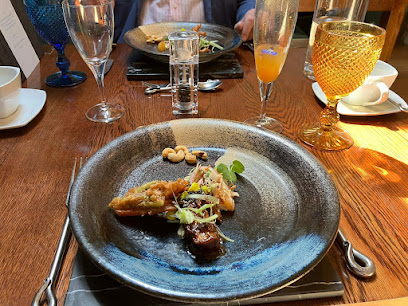
Hebridean Lodge
Experience the best of local seafood at Hebridean Lodge, where culinary excellence meets the stunning beauty of the Isle of Mull.

Local Phrases about Isle of Mull
-
- HelloHallo
[ha-loh] - GoodbyeBidh mi 'gad fhaicinn
[bee vee gahd a-kin] - YesTha
[ha] - NoChan eil
[chan el] - Please/You're welcomeMa 'se do thoil e
[mah sheh doh hohl eh] - Thank youTapadh leat
[ta-pah let] - Excuse me/SorryFurasta dhomh
[foo-ra-sta ghov] - How are you?Ciamar a tha thu?
[kee-a-mar a ha hoo] - Fine. And you?Tha gu math. Agus thu?
[ha goo mah ah-goose hoo] - Do you speak English?A bheil Gàidhlig agad?
[a vayl gah-lik ah-gad] - I don't understandChan eil mi 'tuigsinn
[chan el mee too-sin]
- HelloHallo
-
- I'd like to see the menu, pleaseBu toil leam am meniu fhaicinn, ma 'se do thoil e
[boo toil lum am men-yoo a-kin, mah sheh doh hohl eh] - I don't eat meatChan eil mi a' ithe fiacaill
[chan el mee ah ee-ha fee-kal] - Cheers!Slàinte!
[slan-cha] - I would like to pay, pleaseBu toil leam òiridh a phàigheadh, ma 'se do thoil e
[boo toil lum o-ree a faig-eh, mah sheh doh hohl eh]
- I'd like to see the menu, pleaseBu toil leam am meniu fhaicinn, ma 'se do thoil e
-
- Help!Cuideachadh!
[kwee-jach-ah] - Go away!Falbh leat!
[fal-av let] - Call the Police!Fòn an Poilis!
[fone an pol-is] - Call a doctor!Fòn a dhochtair!
[fone ah dook-tar] - I'm lostTha mi air chall
[ha mee ar khal] - I'm illTha mi tinn
[ha mee tin]
- Help!Cuideachadh!
-
- I'd like to buy...Bu toil leam a cheannach...
[boo toil lum ah chen-ach] - I'm just lookingTha mi dìreach a' coimhead
[ha mee deer-ach ah coo-ee-meht] - How much is it?Cia mheud a tha e?
[kee-a ve-yut a ha eh] - That's too expensiveTha sin ro thràth
[ha sheen ro hra] - Can you lower the price?An urrainn dhut an t-àireamh a ìsliù?
[an oor-in ghoot an tah-rav a eess-loo]
- I'd like to buy...Bu toil leam a cheannach...
-
- What time is it?Dè an t-ìre e?
[jay an tee-reh eh] - It's one o'clockTha e aon uair
[ha eh ayn oo-er] - Half past (10)Leath uair deug
[leh oo-er jook] - MorningMadainn
[ma-dain] - AfternoonFeasgar
[fes-gar] - EveningFeasgar
[fes-gar] - YesterdayAn-dè
[an-jay] - TodayAn-diugh
[an-joo] - TomorrowA-màireach
[a-mar-ach] - 1Aon
[ayn] - 2Dà
[da] - 3Trì
[tree] - 4Ceithir
[keh-ir] - 5Còig
[ko-ig] - 6Sia
[shee-ah] - 7Seachd
[shachk] - 8Ochd
[okht] - 9Naoidh
[nee] - 10Deich
[jehk]
- What time is it?Dè an t-ìre e?
-
- Where's a/the...?Càite a bheil a'...?
[kae-ch ah vayl a] - What's the address?Dè an seòladh?
[jay an sho-lah] - Can you show me (on the map)?An urrainn dhut sealladh dhomh (air a' mhapa)?
[an oor-in ghoot shal-lah ghov (ar ah vah-pa)] - When's the next (bus)?Cuin a bhios am bus as deidh?
[kween a vee-os am bus as je] - A ticket (to ....)Ticead (gu ....)
[ti-ket (goo)]
- Where's a/the...?Càite a bheil a'...?
History of Isle of Mull
-
The Isle of Mull, part of the Inner Hebrides of Scotland, has been inhabited since at least the Bronze Age, as evidenced by the ancient standing stones and burial cairns scattered across the island. These early settlers left behind enigmatic monuments, such as the Lochbuie Stone Circle, which offer a glimpse into the island’s prehistoric past.
-
During the 8th and 9th centuries, the Isle of Mull, like much of the Scottish coastline, experienced Norse invasions. The Vikings left a lasting impact on the island, evident in place names and archaeological finds. The island became part of the Kingdom of the Isles, a Norse-Gaelic kingdom, and was under Norse control until the Treaty of Perth in 1266 when it was ceded to Scotland.
-
The MacLean clan has been a significant presence on the Isle of Mull since the 14th century. Duart Castle, perched on a rocky outcrop overlooking the Sound of Mull, became the stronghold of the MacLeans. The castle, originally built in the 13th century, has a storied history involving clan feuds, battles, and sieges. It remains a symbol of the clan's enduring legacy and is one of the island’s most iconic landmarks.
-
The Isle of Mull played a role in the Jacobite uprisings of the 17th and 18th centuries. Supporters of the Jacobite cause, aiming to restore the Stuart monarchy, sought refuge on the island. The MacLean clan, among others, were known Jacobite sympathizers. The island’s rugged terrain and remote location provided a strategic hideout for rebels and a base for planning operations.
-
The 18th and 19th centuries brought significant economic changes to the Isle of Mull. The Highland Clearances had a profound impact on the island's population, with many residents forcibly evicted from their homes to make way for sheep farming. This period saw a dramatic decline in the population, with many islanders emigrating to North America and other parts of the British Empire in search of better opportunities.
-
One of the most intriguing tales in Mull's history is the legend of the Tobermory treasure. In 1588, a Spanish galleon from the Armada, the San Juan de Sicilia, sought refuge in Tobermory Bay. The ship mysteriously exploded and sank, allegedly carrying a significant amount of treasure. Despite numerous attempts to locate the sunken treasure over the centuries, it remains one of the island’s enduring mysteries.
-
In the 20th and 21st centuries, the Isle of Mull has become known for its natural beauty and wildlife. Efforts to preserve the island’s unique ecosystems have been paramount. The establishment of the Mull Eagle Watch and various marine conservation projects highlight the island’s commitment to protecting its natural heritage. Mull's rich history, combined with its vibrant culture and stunning landscapes, continues to attract visitors from around the world.
Isle of Mull Essentials
-
The Isle of Mull is accessible by ferry from the mainland of Scotland. The main ferry route is from Oban to Craignure, which takes about 45 minutes. Ferries are operated by Caledonian MacBrayne (CalMac) and it is advisable to book tickets in advance, especially during peak tourist seasons. There are also ferries from Lochaline to Fishnish and from Kilchoan to Tobermory. If you're traveling by car, you can drive to one of these ports and take your vehicle on the ferry. Alternatively, you can reach Oban by train or bus from major cities like Glasgow and Edinburgh.
-
Once on the Isle of Mull, you can get around by car, bus, bicycle, or on foot. Renting a car is a popular option for tourists as it allows flexibility to explore remote areas. Bowman's Tours and West Coast Motors operate local bus services, which connect major towns and attractions. Bicycling is also a scenic way to explore the island, though be prepared for hilly terrain. For those who enjoy walking, there are numerous hiking trails offering stunning views. Taxis are available but may need to be booked in advance.
-
The official currency is the British Pound (GBP). Credit and debit cards are widely accepted in hotels, restaurants, and shops, but it's advisable to carry some cash for smaller establishments and rural areas. ATMs are available in major towns like Tobermory and Craignure, but their availability can be limited in more remote areas. Ensure you have sufficient cash before heading out to explore the island.
-
The Isle of Mull is generally a safe destination for tourists. Crime rates are low, but it is always advisable to take standard precautions. Keep an eye on your belongings, especially in crowded areas, and avoid leaving valuables in your vehicle. There are no specific high-crime areas targeting tourists, but it’s always good to stay vigilant and aware of your surroundings.
-
In case of emergency, dial 999 for immediate assistance from police, fire, or medical services. The main medical facility on the island is the Mull and Iona Community Hospital located in Craignure. For minor health issues, there are pharmacies in Tobermory and Craignure. It’s advisable to have travel insurance that covers medical emergencies. For any urgent situation requiring police assistance, the local police station is in Tobermory.
-
Fashion: Do wear comfortable and weather-appropriate clothing, as the weather can be unpredictable. Waterproof clothing is recommended. Religion: Do respect local customs and traditions. When visiting religious sites, dress modestly. Public Transport: Do be respectful and courteous to drivers and fellow passengers. Don't eat or drink on public transport. Greetings: Do greet people with a friendly 'hello' or 'good day.' Handshakes are common but not mandatory. Eating & Drinking: Do try local specialties like fresh seafood and whisky. Don’t refuse hospitality, as it is considered impolite.
-
To experience the Isle of Mull like a local, visit the local farmers' markets where you can buy fresh produce and artisanal goods. Engage with locals, as they are often friendly and willing to share stories about the island's history and culture. Don't miss the opportunity to take a wildlife tour to see the island’s famous eagles, otters, and whales. For a unique experience, attend a ceilidh (traditional Scottish dance) if you have the chance. The island’s music and dance scene is vibrant and offers a glimpse into local culture.
Nearby Cities to Isle of Mull
-
Things To Do in Stirling
-
Things To Do in Inverness
-
Things To Do in Derry
-
Things To Do in Edinburgh
-
Things To Do in Dundee
-
Things To Do in Belfast
-
Things To Do in Aberdeen
-
Things To Do in Kirk Michael
-
Things To Do in Ramsey
-
Things To Do in Peel
-
Things To Do in Laxey
-
Things To Do in Onchan
-
Things To Do in Douglas
-
Things To Do in Port Erin
-
Things To Do in Ballasalla













